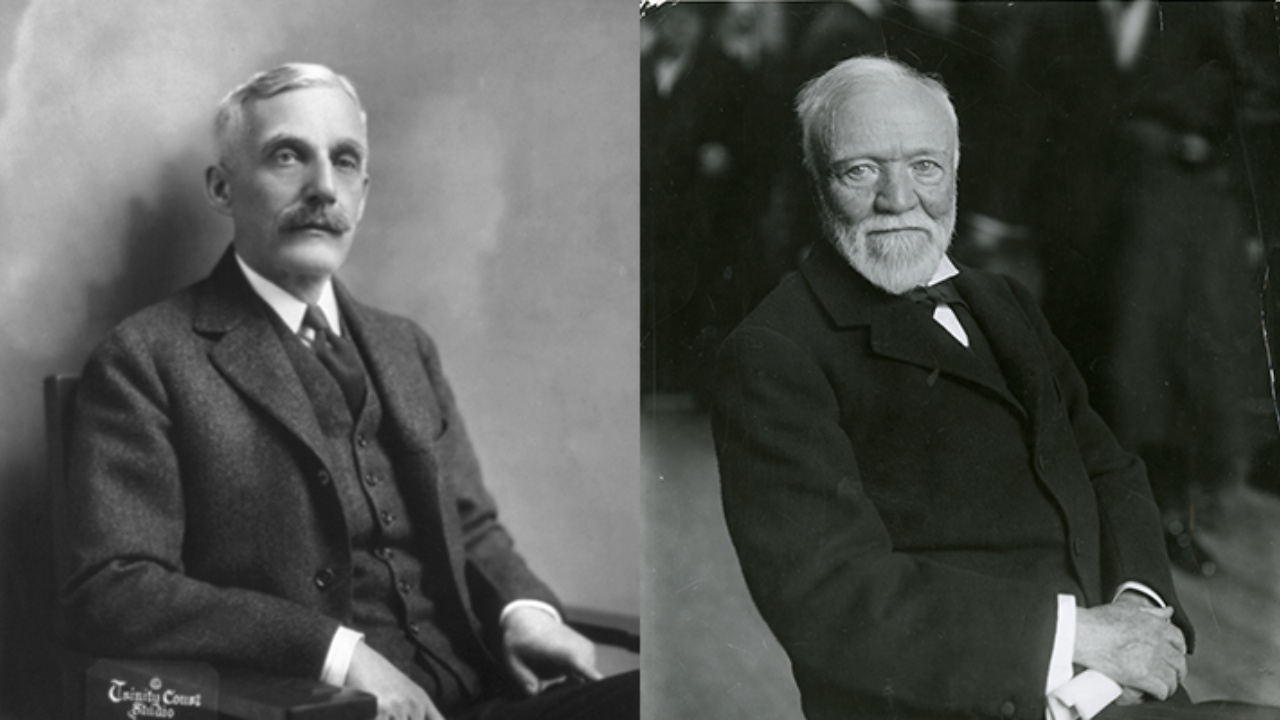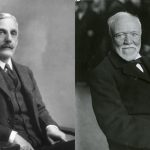When you hear names like Carnegie Mellon University or the Andrew W. Mellon Foundation, you’re encountering the living legacy of two of America’s most influential industrialists: Andrew Carnegie and Andrew W. Mellon. These men were powerhouse figures during America’s Gilded Age, building colossal fortunes in steel and banking, respectively.
Their stories, however, don’t end with their wealth. Both dedicated their later lives to philanthropy, creating enduring institutions that continue to shape education, culture, and the arts today. Their family lines have continued this tradition of influence, with Andrew Mellon’s descendants remaining active in business, philanthropy, and even contemporary politics.
The Founders and Their Enduring Institutions
Andrew Carnegie was a Scottish immigrant who rose from a bobbin boy in a cotton mill to become the dominant force in the American steel industry. After selling his Carnegie Steel Company in 1901, he devoted the rest of his life to large-scale philanthropy. Believing firmly that the wealthy had a moral obligation to use their money for the public good, he gave away the vast majority of his fortune, a sum equivalent to billions in today’s dollars.
His philanthropic vision was both practical and grand; he funded the creation of thousands of public libraries, but also established institutions dedicated to peace and scientific research. In 1900, declaring “My heart is in the work,” he founded the Carnegie Technical Schools in Pittsburgh, which would later become the Carnegie Institute of Technology and, eventually, one half of Carnegie Mellon University.
You Might Like: Donald Trump, Monica Lewinsky, and the Ballroom Drama
Andrew William Mellon, often referred to as A. W. Mellon, was a Pittsburgh-based banker and venture capitalist. His influence stretched across the American economy through his investments in hundreds of companies, including giants like Alcoa (aluminum), Gulf Oil, and Koppers. He also served as the U.S. Secretary of the Treasury for an impressive eleven years, from 1921 to 1932, under three presidents. Like Carnegie, Mellon turned to philanthropy. In 1913, he and his brother Richard B. Mellon founded the Mellon Institute of Industrial Research.
NEW SHORT DOC: Andrew Mellon, one of the richest men in America in the 1920s, served as Treasury secretary under three presidents. A new short doc examines how he used his influence to shape an era of monopoly power, debt reduction, and tax cuts. Learn more:… pic.twitter.com/EyxFOldmSS
— Retro Report (@RetroReport) September 12, 2025
In 1969, his children, Paul Mellon and Ailsa Mellon Bruce, consolidated their own philanthropic foundations to create The Andrew W. Mellon Foundation in honor of their father. This foundation, with an endowment of several billion dollars, continues to be a major force in supporting the arts and humanities. Another physical tribute to him is the Andrew W. Mellon Auditorium in Washington, D.C., a majestic Neoclassical building completed in 1935 that has been the site of historic events like the signing of the NATO treaty.
The Lasting Legacy in Education and Beyond
The separate paths of Carnegie and Mellon converged in 1967 when the Carnegie Institute of Technology merged with the Mellon Institute of Industrial Research. This union created Carnegie Mellon University (CMU), a world-renowned research institution that carries the names of both its founding benefactors. CMU is now celebrated for its interdisciplinary approach and is a global leader in fields like computer science, robotics, and the arts, perfectly blending the practical, industrial spirit of both its namesakes.
When considering Andrew Mellon’s net worth, it’s important to view it through the lens of his immense business empire. While a precise modern equivalent is difficult to calculate, his wealth was built from his ownership of Mellon Bank and massive stakes in numerous pioneering corporations. The Mellon family fortune has continued to grow over generations. Today, the family’s collective net worth is estimated by Forbes at $14.1 billion, a testament to the enduring financial empire Andrew Mellon helped build.
A common point of confusion involves the name “Carnegie Mellon” and the Mellon family. Timothy Mellon, a major political donor, is the grandson of Andrew W. Mellon and an heir to the Mellon banking fortune. He is not related to Andrew Carnegie. His connection is specifically to the “Mellon” in Carnegie Mellon University, which honors his grandfather’s legacy and the institute he founded. Timothy Mellon has been in the news for his substantial donations to Republican causes and candidates. He previously served as a trustee for the Andrew W. Mellon Foundation but stepped down in 2002.
The stories of Andrew Carnegie and Andrew W. Mellon are a fundamental part of American history. They were titans of industry who shaped the nation’s economic landscape, but they also pioneered a model of strategic philanthropy. Their names, joined in Carnegie Mellon University and standing strong in foundations and institutions across the country, continue to drive progress and innovation, proving that their “hearts are in the work” long after they are gone.












